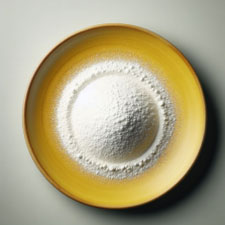Modified starch or starches are common ingredients used everyday staples like sauces, frozen dinners, dairy items, or crispy snacks. Acetylated distarch adipate (INS 1422) and hydroxypropyl distarch phosphate (INS 1442) referred to as modified food starches.
Modified food starch, also known as starch derivatives, are prepared by treating native starch by methods like physical, chemical, enzymatic, etc. These processes, depend upon starch source & intended end use. Common techniques include pre-gelatinization, radiation treatment, heat treatment, esterification, etherification, acid or alkaline treatment, bleaching, oxidation, and emulsification. The versatile starch molecule can go through molecular cleavage, rearrangement, or the addition of substituent groups.
Modified food starch is treated suitably to meet specific needs in various applications where native starch falls short. Its resistance to acid, alkali, shear, elevated temperature, and freeze/thaw cycles, among other qualities, distinguishes it from native starch. Modifications affect properties such as gelatinization temperature, viscosity, retrogradation, gel clarity, texture, and taste.
Native starches are derived from maize, waxy maize, tapioca, potato, wheat, rice etc.

Modified Starch

Modified Starch Powder
Pre-gelatinization is the simply done by cooking & drying the starch. A pregelatinized starch keeps not of the functional properties of native starch but enables starch to swell & become soluble in chilly water as well as have a crispy texture after baking.
Stabilized starch is manufactured by esterification or etherification reaction of starch with various molecules. Acetylation & hydroxypropyl etherification are two quite common methods used to :
Modified starches are obtained by treatment with acids like, phosphoric acid, oxalic acid etc. This makes the native starch resistant to shear, heat, and acids. The following types of modifications are important :
Starch can undergo both stabilization & cross-linking :
Modified starches can be used as binder, thickener, stabilizer, emulsifier, or gelling agent.
Thus, they can be used to manufacture products like canned goods, frozen meals, meats, baked goods, confectionery, beverages, dairy desserts, fruit fillings, gravies, sauces, instant noodles, and soups.